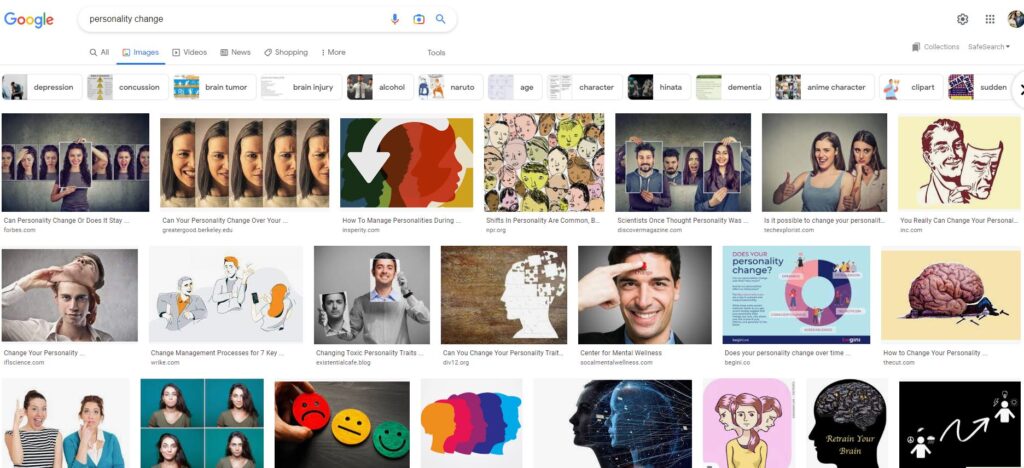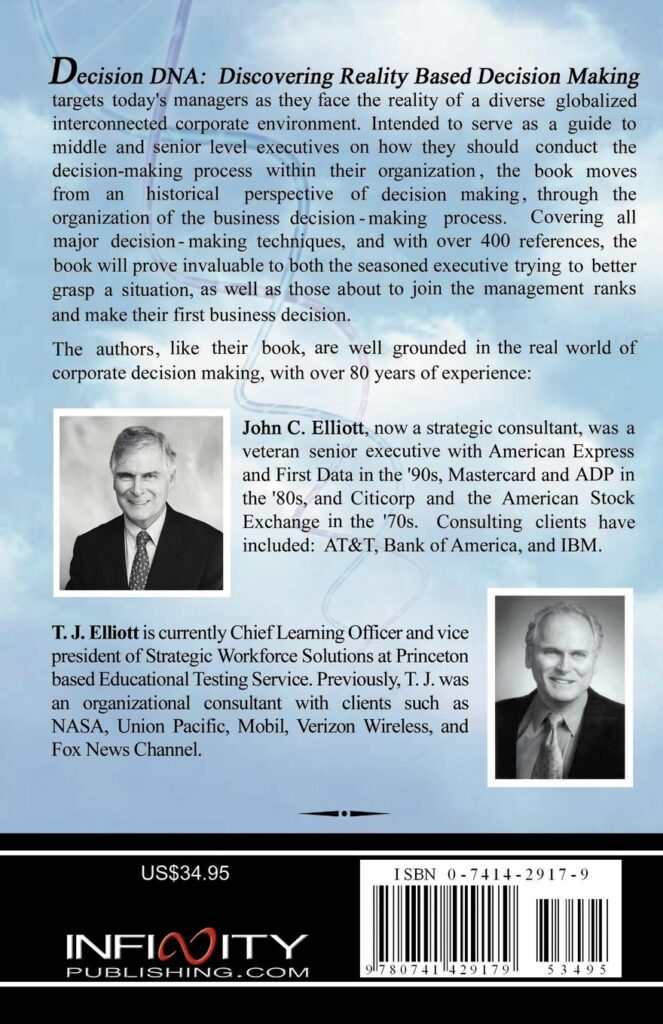
- Myers-Briggs Antipathy: Maybe It’s Just My Personality Part IV
- Myers-Briggs Antipathy: Maybe It’s Just My Personality–Part III
- Myers-Briggs Antipathy: Maybe It’s Just My Personality–Part II
- Myers-Briggs Antipathy: Maybe It’s Just My Personality
Googling ‘personality change’ reveals many negative connotations for the phrase. “He had a real personality change” isn’t a statement that we associate often with someone now operating at a better and more effective level, is it? Yet there is great interest in that kind of improvement shown in articles like this one from NPR in 2016. Some pieces tie the changes to therapy like this article but if we have valid and reliable instruments to assess our noncognitive constructs like conscientiousness and openness are there other modes of intervention that could also work?
There are tests that tell us things about personality that DO enjoy validity and reliability. Check that: they tell us about certain noncognitive constructs thought to form personality. Generally, the tests that enjoy validity and reliability connect to constructs known as the Big Five Traits or OCEAN. The latter acronym refers to Openness, Conscientiousness, Extraversion, Agreeableness, and Negative Emotionality. As Ethan Mollick pointed out a few months ago in this link, 71 to 83% of all commonly used psychological scales are basically facets of the Big Five scale, many with extremely high correlations to the Big Five. And these tests do correlate with achievement at work and school. I wrote previously about my experience like Patrick Kyllonen, Rich Roberts, Steve Robbins, and Bobby Naemi on research that demonstrated the connection between conscientiousness — one of the Big Five — and higher performance evaluations.
Recent research suggests that emotional intelligence of founders of startups offers twice the impact of their mental acuity when looking at entrepreneurial success. Take out your salt shaker for that proverbial grain, however: both areas combined are desirable obviously and as with any such finding we should look for substantial replication from other studies before favoring one set of attributes over another. Additionally, those studying noncognitive attributes may not have a firm grasp of what constitutes cognitive attributes thereby making it difficult to draw the line between these two domains as my friend and former colleague Harrison Kell pointed out in this paper
How does this fit in with the theme of this blog — No Tests but for Learning? Again, we should stop devoting resources such as time, money, attention, and acceptance to tests that do not have a component that allows people to learn. Telling people what they ‘are’ and leaving it at that is just another mode of what Paolo Freire referenced in his influential book The Pedagogy of the Oppressed: the depositing or banking model of education where the teacher deposits something in the student; “knowledge is a gift bestowed by those who consider themselves knowledgeable upon those whom they consider to know nothing.” Telling people that they have particular attributes without giving them an opportunity to understand how they might change or enhance those attributes represents a waste of time and money. I don’t know about anyone else, but I don’t have spare reserves in those categories that can go to waste.
Thankfully, there are now many avenues for individuals, groups, and institutions for learning how to shift our noncognitive side. An earlier post in this blog recapped my experience being a preprint reader for a very important paper looking at the prospect of helping people to change or acquire attributes on the so-called noncognitive or emotional intelligence side. The paper was a comprehensive meta-analysis of the malleability of non-cognitive skills by my former ETS colleagues Michelle P. Martin-Raugh, Kevin Williams, and Jennifer Lentini that contested the notion that traits such as The Big Five were influenced completely by genetics and indicated better designed interventions might alter our openness, agreeableness, and conscientiousness significantly and valuably for all concerned.
In a subsequent paper, Improving Noncognitive Constructs for Career Readiness and Success: a Theory of Change for Post Secondary, Workplace, and Research Applications, the same authors put together a ‘theory of change’ that described the inputs, mechanisms, and outputs of noncognitive construct interventions. They found that those interventions or ‘agents of change’ such as team training, workplace coaching, and interpersonal skills training did have an impact in both higher education and workplace environments. Their rigorous review of these possibilities also points out that there can be unintended consequences from such interventions; e.g., “social desirability, impression management, coaching, or other influences may threaten the integrity of formative assessment results.” In other words, the very presence of the interventions may lead to more people ‘faking’ what is now advertised as sought-after personality improvements, an instance of what is known as Campbell’s Law: “when a single metric is used to determine success or failure, human beings are likely to try to optimize their behavior to improve that metric — sometimes with ridiculous or dangerous consequences. People manage the metric, rather than using the metric to help manage the underlying issue of interest.”
Another unintended consequence of noncognitive interventions, in other words, tests in this area that also enable learning and change for the individual, is according to Williams, Martin-Raugh, and Lentini “that some participants may use their improve noncognitive proficiencies for destructive purposes. For instance, some individuals may use newfound interpersonal skills to unethically manipulate customers, clients, or coworkers.” Good on Kevin, Michele, and Jennifer for recognizing these possibilities, but they also point out that the danger is at this time “largely speculative.”
Recognizing the need for such cautions, the authors do go on to talk about how to translate their theory of change into a theory of action, how to construct experiences that not only assess where someone is right now in possession and mastery of these important attributes but provide a pathway to improvement and refinement of those traits. And they are not the only ones. Angela Duckworth, James Heckman — a Nobelist in Economics, Richard Boyatzis, and Ed Salas are just a few of the researchers working in this area. Pioneers of such interventions who have passed on include Charles Snyder, Richard Hackman, and Edwin Nevis
I would especially urge anyone interested in these noncognitive interventions to look at the work of Bob Kegan and Lisa Lahey, and not just because they have been very good friends and mentors to me over the years. (I wrote about their profound influence upon me that radiated out to hundreds of other colleagues in my 15 Thank Yous series in 2016.) The foundation of their work is that our development mentally and emotionally need not stop right after adolescence as was accepted commonly by even brain scientists right up to the beginning of this century. The exercises that they employ work from an “understanding of human development — what it is, how it is enabled, how it is constrained”. (It may seem confusing that Bob and Lisa use the term ‘mental’ and in this series we been talking about personality and noncognitive constructs, but there concepts encompass those personality traits, interpersonal skills, and additional noncognitive constructs. For example, Williams, Martin-Raugh, and Lentini include in their review of the research attitudes and emotions. Keegan and Lahey’s work helping people to develop toils in the same realms.)
The direction of improvement in this scheme would be moving ourselves from the plateau of ‘socialized mind’ to ‘self-authoring mind’ and perhaps even to ‘self-transforming mind’. In all of those states, an individual can be said to be maturing or even mature; Bob Kegan gives the example of “When your teen-ager gradually begins to put maintaining a relationship—with you, or a friend, say—ahead of his or her short-term self-interest, we can see that this teenager is becoming more ‘mature.’” But there is a next level to so-called maturity or development known as the Self-Authoring mind that as Kegan notes involves, “the ability to construct a system, to step back from the ‘givenness’ of social and psychological arrangements—that this is ‘just how things are’—and begin to take a new kind of responsibility for how things go internally and externally.” If we were to put the energy and resources to currently go into summative noncognitive assessment into a system where the assessment was not only formative but part of an intervention to allow an individual to move to that next plateau the advantages not only for the person but for their families and society would prove enormous.
What can any of us do in this regard? Learn more about noncognitive constructs so that we can promote their inclusion in curricula. Ask that any so-called ‘tests’ associated with personality not only be research-based, but also interventions to take participants further up on this series of plateaus of development. After this post, I’m going to switch back over to playwrighting for a time, but upon return in several weeks time, a new section of this blog will address directly 10 Tools that I have found useful in improving our ability to communicate, interact, and evolve in work organizations. At that time, I hope you’ll help me to promote these tools so that others — especially our younger friends and relatives — gain their benefits.
Thanks for reading!
Postscript
Hours after writing this post, my eldest brother, John C. Elliott, died peacefully in the presence of his loving children after injuries from a fall. A lot of who i am is owed to his love, direction, and support. I dedicate this post to him. We relished writing a book together, playing basketball, and singing doowop among many other things. I miss him already. Here is our book written in 2001.
